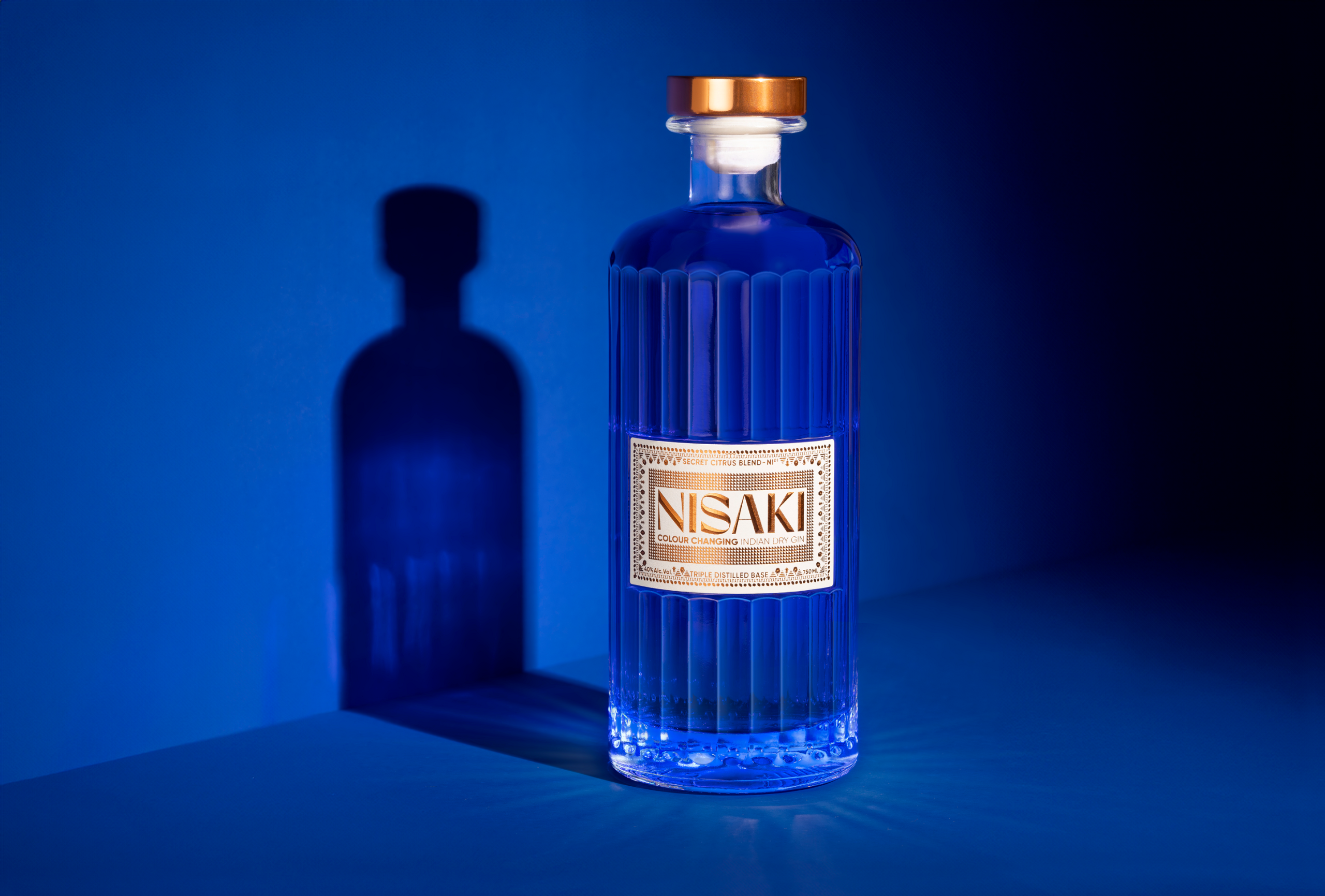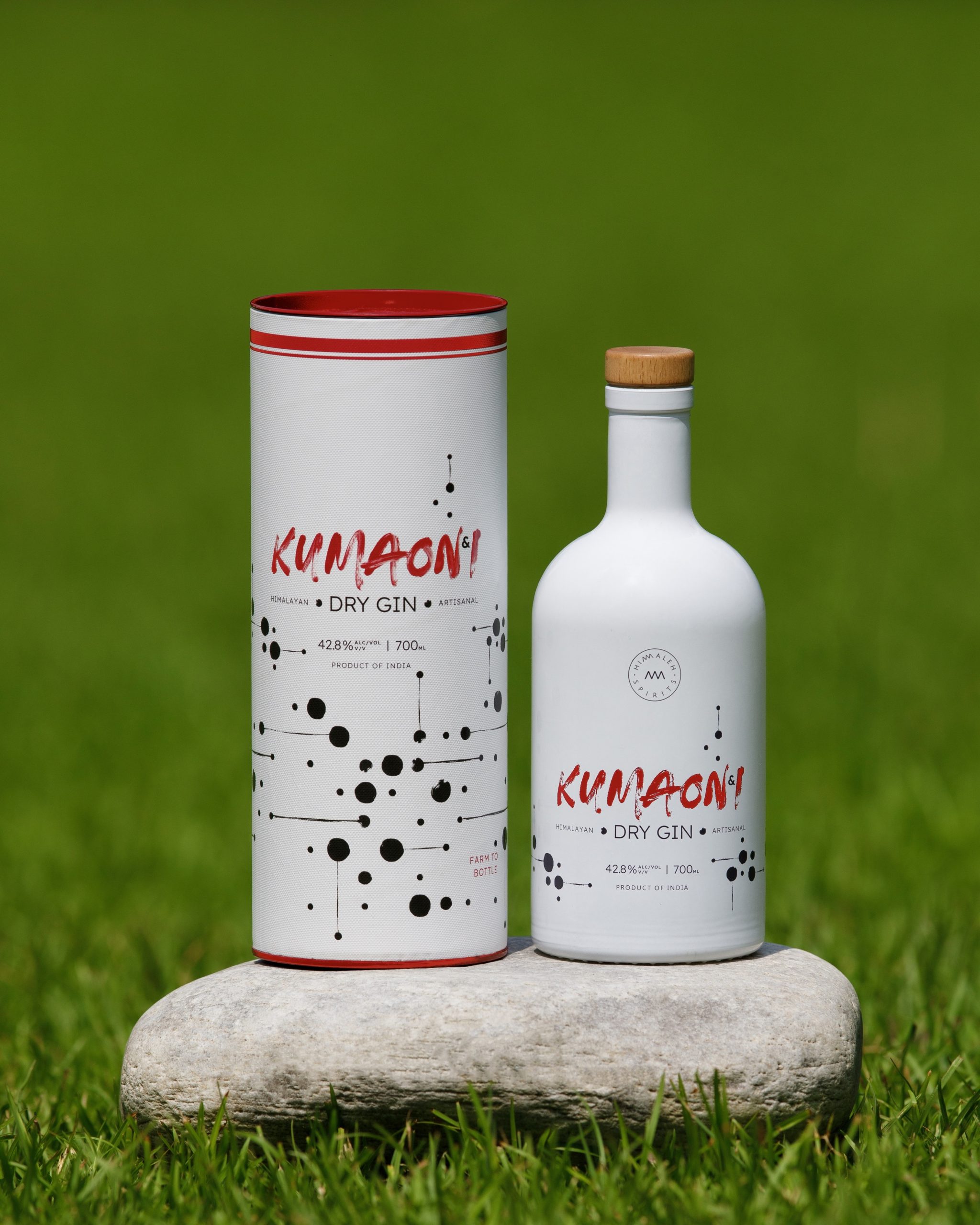Sustainable Sip: Green Is The New Gin
By Geetika Sachdev
It’s the world of gin and we are living in it. With spirit-forward sips and artisanal brands doing the rounds more than ever, there’s a lot happening in terms of innovation and flavour. But the gin consumer demands more today. They want to be clued into what’s happening behind the scenes–from production to packaging, and everything in between. In a nutshell, they seek craft with a conscience.
While a few brands were always more attuned to sustainability, others have followed suit. That’s also because being eco-conscious is no longer just about being ‘fashionable’, it has become a defining value in the spirits industry. Today, there are plenty of distillers across India, who are stepping up efforts to adopt greener practices from farm to bottle. From locally sourcing botanicals to reduce transport emissions to regenerative farming and wild foraging–there’s enough and more happening in the gin universe. Other measures include cutting energy use with solar power, closed-loop systems, and low-temperature distillation. Packaging is also getting an eco-upgrade. Recycled glass, compostable labels and even paper bottles are replacing traditional formats.

This wave signals a robust shift toward eco-conscious spirits, rooted both locally and globally. Let’s take a look at how some prominent homegrown and international gin brands are walking the talk when it comes to sustainability.
Behind the brew
If one isn’t careful, gin distilling can lead to plenty of water down the drain. While traditional distillation consumes up to 20,000 litres of water per batch for condensation, the closed loop system offsets this cycle. Closed loop systems lower carbon footprints, reduce water usage, and eliminate single-use materials, making them a mandate for distilleries aiming for net zero targets and circular economy alignment. “We have invested in a closed loop chiller system with a heat exchanger, which uses just 500 litres of water. This water circulates continuously for several months, eliminating the need for large-scale water consumption and storage,” says Vaniitha Jaiin, founder and chief evangelist of Revelry Distillery. Their custom pot still runs entirely on electricity, meaning no fossil fuels, no water used for heating, and zero on-site emissions. It is a cleaner, more efficient approach that aligns with their low-impact philosophy.

Nisaki, popular as India’s first colour-changing gin, also champions sustainability–not only using a closed-loop cooling system but also opting for small-batch distillation to minimise waste and maximise control. “This not only ensures better quality control but also leads to less energy consumption per run. Our distillery sources green energy wherever possible, and we prioritise low-emission logistics for sourcing raw materials,” shares Sanchit Agarwal, co-founder, Nisaki.
At Peak Spirits, the makers of Jin Jiji, sustainability is woven into every step of the process. The gin features a carefully chosen blend of regional botanicals like Himalayan juniper and Darjeeling tea, sourced responsibly from local growers across India. “We support traditional agricultural communities and promote sustainable sourcing practices that preserve biodiversity,” says Ansh Khanna, co-founder at Peak Spirits. “Our production process emphasises transparency, traceability, and long-term relationships with growers who share its values around sustainability.”
Rooted in responsibility
Botanical sourcing is an important aspect for Nao Spirits & Beverages. From the start, their focus has been on quality produce from the source of its origin. “With Hapusa, the highlight is the Himalayan juniper, which grows wild–not farmed or cultivated. We work directly with the original local forager communities to hand-forage the wild juniper, and rely on trusted partners for our other botanicals,” says co-founder Anand Virmani.

Even Kumaon & I from Himmaleh Spirits follow the same principle. The botanicals are ethically foraged by local Kumaoni women, who are trained to collect ingredients in ways that protect the plant populations and natural habitats. “This method not only ensures sustainability but also creates livelihoods and promotes the cultural heritage of Uttarakhand. Each bottle is a reflection of the region’s wild, untouched beauty,” adds Samarth Prasad, co-founder, Himmaleh Spirits.
This approach isn’t limited to homegrown brands but also international players like Tanqueray gin. The brand emphasises direct relationships with farmers and supports regenerative agricultural initiatives.
In October 2022, Diageo India launched a regenerative agriculture programme covering 25,000 hectares across 60 villages in Punjab and Haryana, involving 6,000 farmers. The idea was to reduce carbon footprint, minimise water usage, and improve soil quality through regenerative and no-burn techniques, demonstrating their global commitment to sustainable sourcing. “These ambitious initiatives are built upon three core pillars: preserve water for life, accelerate to a low carbon world, and become sustainable by design,” points out Ruchira Jaitly, chief marketing officer at Diageo India. “These interconnected commitments guide our interaction with the natural world, ensuring that our botanical sourcing practices are seamlessly integrated with our broader environmental stewardship goals.”

From bottle to bin
At Nao Spirits & Beverages, conservation efforts also include composting their spent botanicals, which Virmani admits, wasn’t an easy process to figure out. “Since the botanicals are in direct contact with alcohol during distillation, they tend to absorb quite a bit of it, which tends to slow down or even inhibit the composting process,” he shares. “We worked with a local waste manager to devise a drying process before composting.” Currently, all their spent botanicals go through sun drying before they are composted.
Another example revolves around the Gondhoraj lime they use in Hapusa gin. For distilling the spirit, they only use the peel to derive maximum flavour concentration. “The rest of the fruit doesn’t go to waste; it gets used at MTW for its juice in cocktails. In this circular loop—one might be drinking a Hapusa cocktail at the bar where the gin has the peel and the cocktail has the juice, from the same lime,” says Virmani.
Packaging is another consideration for gin brands with a conscience. For instance, Nisaki’s packaging has been designed using recyclable glass bottles while five-ply corrugated boxes are used for safer and sustainable transport. “Our printing inks are eco-certified and we are actively exploring plant-based alternatives for our labels and closures,” explains Agarwal. “Internally, our production facility follows lean operations to reduce wastage.”

The bottles of Vanaha Gin are also consciously designed by AGI Glaspac, a manufacturer actively pursuing environmentally responsible practices across its production lines. Besides, they use Fleur de Coton paper for their labels—a premium, wood-free material that is also FSC-certified. Tanqueray is also on the same page. All their packaging is widely recyclable, with a target of 60% recycled content by 2030. To reduce single-use glass waste, they are piloting refillable packaging like ecoTOTES in global markets. “Ultimately, our goal is to build a resilient, responsible, and regenerative supply chain that not only safeguards the integrity of Tanqueray’s iconic flavour, but also contributes meaningfully to a low-carbon, sustainable future,” reiterates Jaitly.
The future is green
Innovation seems to be the name of the game when it comes to sustainable pours. The general trend, Virmani says, is to experiment with packaging, including alternatives such as aluminium bottles. “Based on our own experiments, we have observed the recycling rates of aluminium and glass are fairly similar. It will be interesting to note what happens on this front,” he affirms.
There’s also a growing shift toward hyperlocal sourcing, which supports both sustainability and storytelling. That’s not all–an increased interest in circular distillation models will shape the industry. “Brands are investing in carbon-neutral logistics, plant-based packaging, and even refillable bottle models. I believe the future of gin lies in being both innovative and intentional, blending craftsmanship with care for the planet,” explains Agarwal.
Another key trend will be the rise of regenerative botanical farming, which goes beyond sustainability to actively restore ecosystems. On the consumer-facing side, there’s more interest in low-and zero-alcohol formats and functional botanicals. These not only align with wellness trends but often require fewer natural resources to produce, supporting our sustainability goals, reveals Jaitly.
Looking ahead, the most successful gin brands will be those that seamlessly integrate environmental stewardship with product excellence, offering sophisticated, flavour-forward spirits alongside a transparent and compelling sustainable story behind every bottle.
After all, there’s no greater joy than sipping on a planet-friendly pour. Cin Cin!



